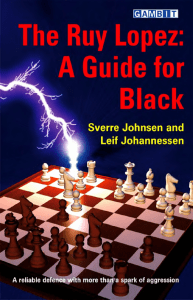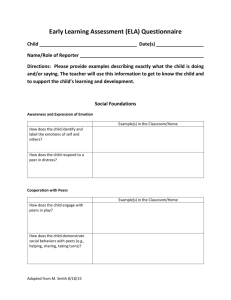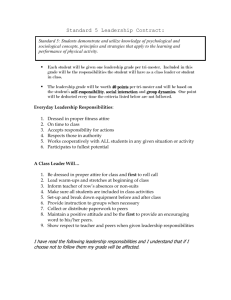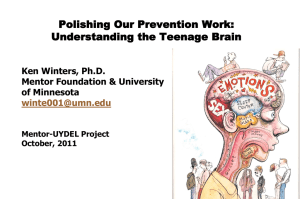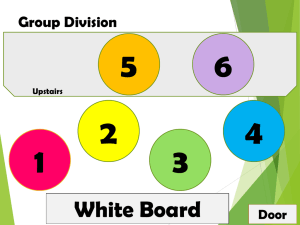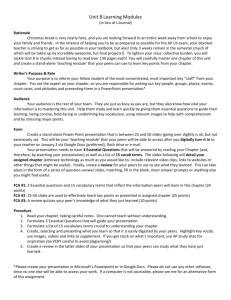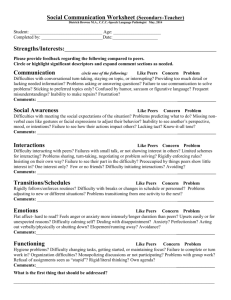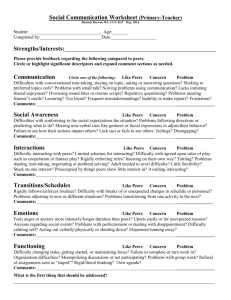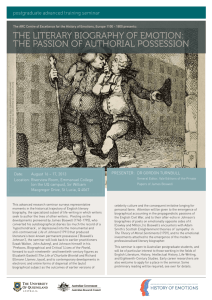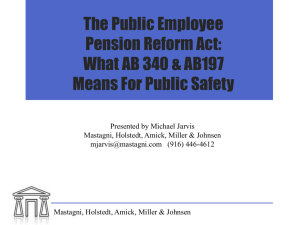Nine Steps to Implementing Independent Study (Word 2007, 29 KB)
advertisement
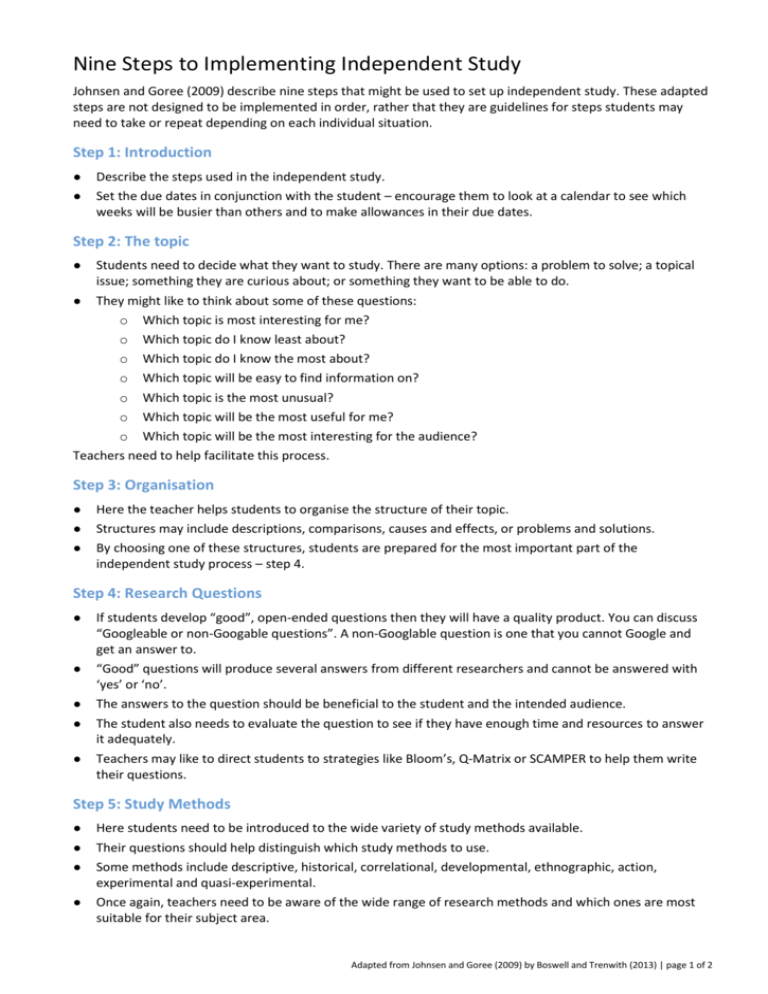
Nine Steps to Implementing Independent Study Johnsen and Goree (2009) describe nine steps that might be used to set up independent study. These adapted steps are not designed to be implemented in order, rather that they are guidelines for steps students may need to take or repeat depending on each individual situation. Step 1: Introduction ● ● Describe the steps used in the independent study. Set the due dates in conjunction with the student – encourage them to look at a calendar to see which weeks will be busier than others and to make allowances in their due dates. Step 2: The topic ● Students need to decide what they want to study. There are many options: a problem to solve; a topical issue; something they are curious about; or something they want to be able to do. ● They might like to think about some of these questions: o Which topic is most interesting for me? o Which topic do I know least about? o Which topic do I know the most about? o Which topic will be easy to find information on? o Which topic is the most unusual? o Which topic will be the most useful for me? o Which topic will be the most interesting for the audience? Teachers need to help facilitate this process. Step 3: Organisation ● ● ● Here the teacher helps students to organise the structure of their topic. Structures may include descriptions, comparisons, causes and effects, or problems and solutions. By choosing one of these structures, students are prepared for the most important part of the independent study process – step 4. Step 4: Research Questions ● ● ● ● ● If students develop “good”, open-ended questions then they will have a quality product. You can discuss “Googleable or non-Googable questions”. A non-Googlable question is one that you cannot Google and get an answer to. “Good” questions will produce several answers from different researchers and cannot be answered with ‘yes’ or ‘no’. The answers to the question should be beneficial to the student and the intended audience. The student also needs to evaluate the question to see if they have enough time and resources to answer it adequately. Teachers may like to direct students to strategies like Bloom’s, Q-Matrix or SCAMPER to help them write their questions. Step 5: Study Methods ● ● ● ● Here students need to be introduced to the wide variety of study methods available. Their questions should help distinguish which study methods to use. Some methods include descriptive, historical, correlational, developmental, ethnographic, action, experimental and quasi-experimental. Once again, teachers need to be aware of the wide range of research methods and which ones are most suitable for their subject area. Adapted from Johnsen and Goree (2009) by Boswell and Trenwith (2013) | page 1 of 2 Step 6: Gathering Information ● The study method and gathering information both refer back to the questions that are guiding the independent study. ● There are multiple ways of gathering information – note taking, emails, surveys, interviews, observing, focus groups, WWW, field trips, reading journals/books/newspapers/magazines, brainstorming with peers or teachers, controlled experiments… to name just a few. ● Teachers should guide the students as to which ‘collection’ methods are the most suitable in their subject and the best skills to use in that approach. ● Paraphrasing skills should be explicitly taught to avoid plagiarism as well as skills to help students identify the validity of sources. Step 7: Product ● ● ● Independent study does not mean “written report”. Students should be able to choose what product they want to develop to present their research and this product should be appropriate to the audience. The product should have a purpose – teachers could suggest that students choose an EEE product (Engage, Entertain or Enrage). Teachers need to guide students as to what is expected in each product. For example, maps and timelines have formats that students need to learn and adhere to. Step 8: Sharing Information ● ● ● ● ● Learning should be presented to a ‘real audience’ which will understand and appreciate the student’s learning. The class that the student is in may not be the best audience if the student’s learning is asynchronous with the learning levels in the classroom. ‘Real audiences’ might be – adults who work in the field, the principal or other teachers, other gifted students, an older class, parents or an online audience. The teacher should discuss with students that nothing we do should be in isolation. There are many reasons to share our information with others: o students can learn from their peers o students can improve their products through looking others o peers can help evaluate products o students can support other products The way to share the information should be determined by the set audience. The skills involved in the ‘sharing’ should also be taught. The products should ‘live’ and be of use to students. Step 9: Evaluation ● ● ● ● ● ● Formative and summative evaluation should be used. Self assessment is also an important stage and metacognition should be included. Peer-assessment can also be included. If an official grade is to be given, then students should receive a rubric or checklist at the beginning of the study. Students should be involved in the development of any teacher-developed assessment processes and tools that will be used. Evaluations should be focused on what the student has learnt and how their skills have progressed. Assessment should be done ‘with’ not ‘to’ the student. Adapted from Johnsen and Goree (2009) by Boswell and Trenwith (2013) | page 2 of 2
